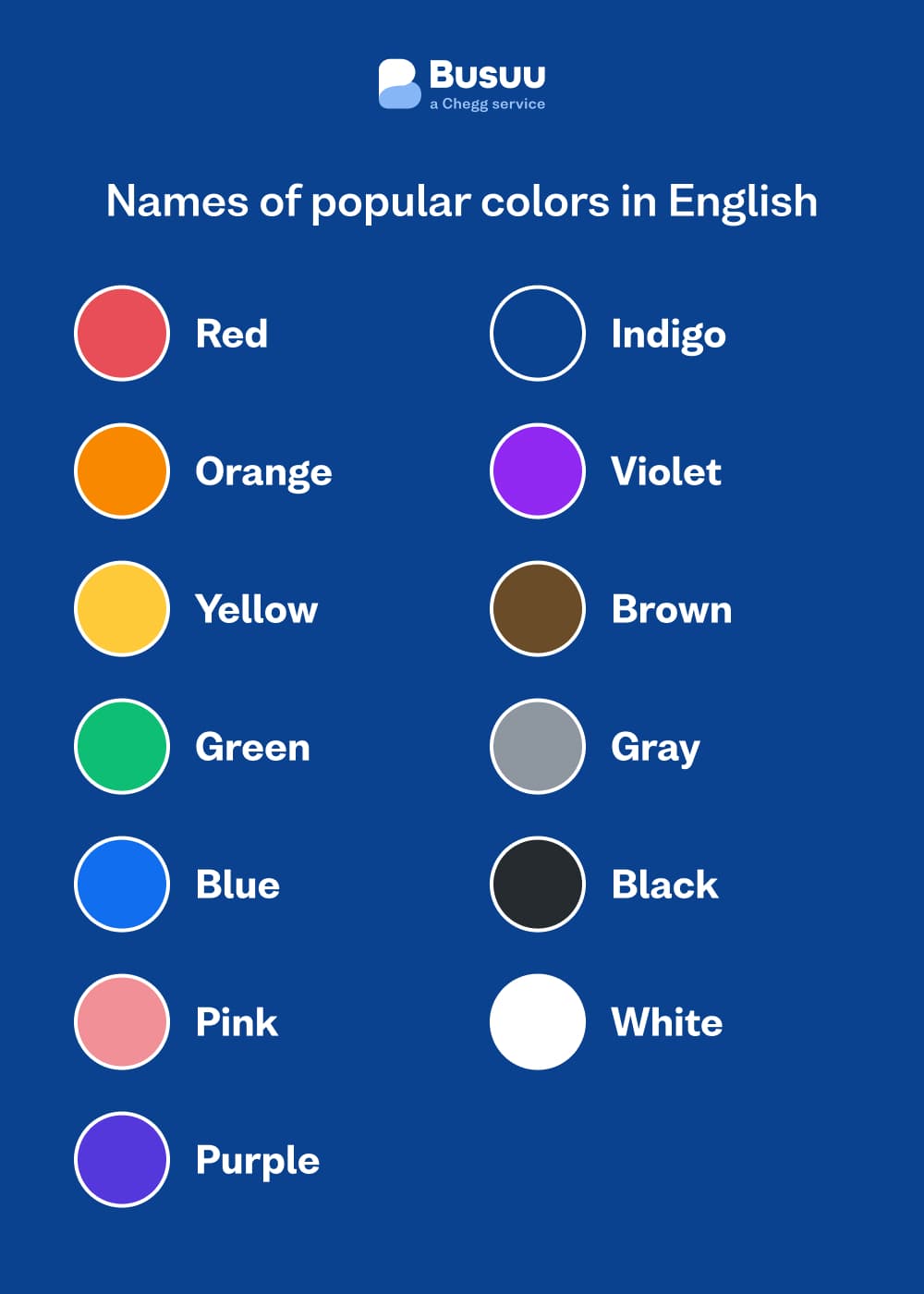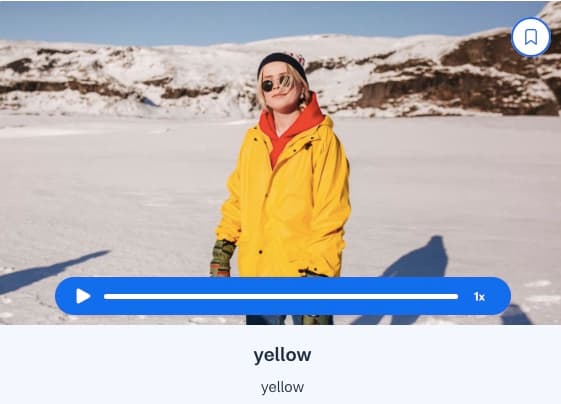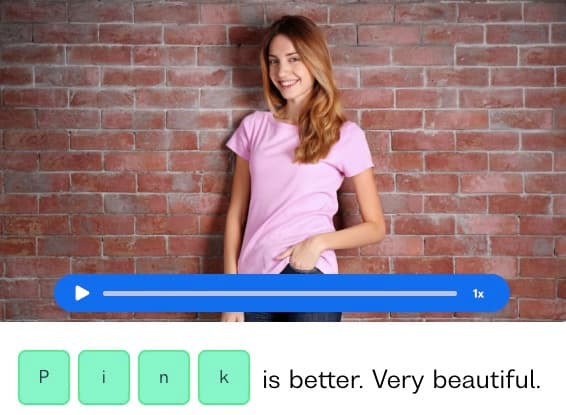I want to learn...
We often describe things in terms of size, shape, and color. While learning English, it is crucial to learn about these essential colors to improve your vocabulary.
By the end of this article, you won’t just learn about the essential colors in the English language, you will also be able to talk about different shades too.
A list of useful colors in English:
The below list will help expand your vocabulary of colors in English and will also help you communicate easily with a native speaker:
Red
Orange
Yellow
Green
Blue
Purple
Pink
White
Gray / grey
Brown
Black

Colors of the rainbow in English
A rainbow is an interesting natural phenomenon that you’ll be familiar. Light is divided into a spectrum of seven colors:
Violet
Indigo
Blue
Green
Yellow
Orange
Red
Here is an interesting tip to remember the colors of the rainbow in English. The acronym VIBGYOR will help you remember the colors of the rainbow easily.
Now that we have learned the essential colors and the rainbow colors, let’s look at the types of colors.
Types of colors:
3 primary colors: red, yellow and blue
3 secondary colors: orange, green and violet
6 tertiary colors: red-orange, yellow-orange, yellow-green, blue-green, blue-violet and red-violet
Primary colors are the three colours that cannot be produced by mixing other colors.
Secondary colors are created by combining two primary colors (example: red [primary color] + yellow [primary color] = orange [secondary color]).
Tertiary colors are formed by mixing a primary and a secondary color. For example, red (primary color) + orange (secondary color) = red-orange.
You can experiment and mix different colors to achieve different results.
Color models
There are two color models, each with their own set of purposes and characteristics.
CMYK: CMYK stands for cyan, magenta, yellow and key (black). You might be interested to know that the term “key” is shorthand for black, which comes from traditional printing where a key plate is used to apply the detail of an image using black ink.
The CMYK model is a subtractive model, which means that colors are created by absorbing visible light wavelengths. The wavelengths of light that are not absorbed are reflected, and this reflected light is what we see as color.
RGB: RGB is an abbreviation for red, green, and blue. It is applicable to computers, televisions, and electronic devices. The RGB model is an additive model, which means that colors are created by adding light waves together in specific combinations to produce colors.
Why does “color” have two different spellings?
You might have heard that color can also be spelled as colour. Both have different spellings, but they have the same meaning.
The word “color” is the standard spelling for American English, while the word “color” is the standard spelling for British English. They are used in the same contexts but have different spellings depending on which side of the Atlantic you’re on.
Why does "gray” have two different spellings?
Gray and grey are two different ways of spelling the same word. The only fundamental difference between the two is that “grey” is widely accepted in British English, whereas “gray” is used in American English.
Essential English colors and their meanings
Now, let's come to the most essential part and learn the colors as well as what they typically symbolize in English-speaking countries:
Red: Red is a color of anger, love and danger
Orange: Orange represents energy, enthusiasm and warmth
Yellow: Yellow denotes happiness and positivity
Green: Green symbolizes nature. The color green represents jealousy and good luck
Blue: Blue represents stability, inspiration and wisdom
Purple: For centuries, the color purple has been a sign of royalty. It also represents power and luxury
Pink: The color pink represents femininity, kindness and affection
White: White is associated with peace, purity and innocence
Gray/grey: Grey/gray is considered to be an emotionless color. So, we can associate grey/gray with dullness. Can you associate grey with something?
Brown: Brown is associated with stability, reliability and strength
Black: Black is frequently associated with death, evil and negativity
How to use colors in a sentence
There are three different ways to describe the color of something:
My brother's car is black.
The black car is my brother's.
Black is the color of my brother's car.
Now that we know the essential colors in the English language, rainbow colors, different colors and their meanings, and ways to describe the color of things, the only thing left to learn about colors is describing their different shades.
Colors have different shades. For example, we can have dark green, light green and bright green.
There can be times when we aren't exactly sure how to describe a color. During such times, we can use the suffix -ish. Fluent English speakers often use -ish to describe colors. For example, a color can be: orangish, reddish, greenish
Newlanguages


